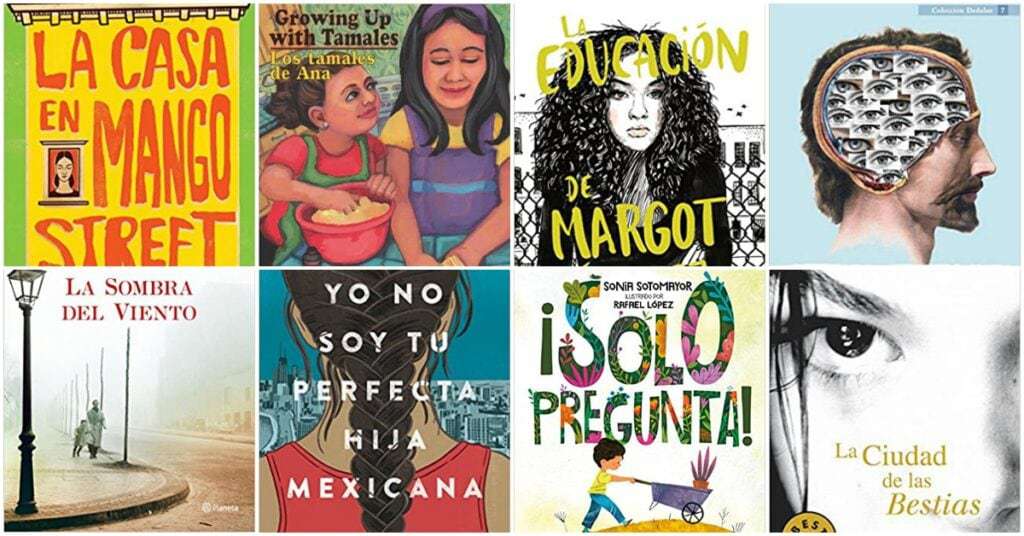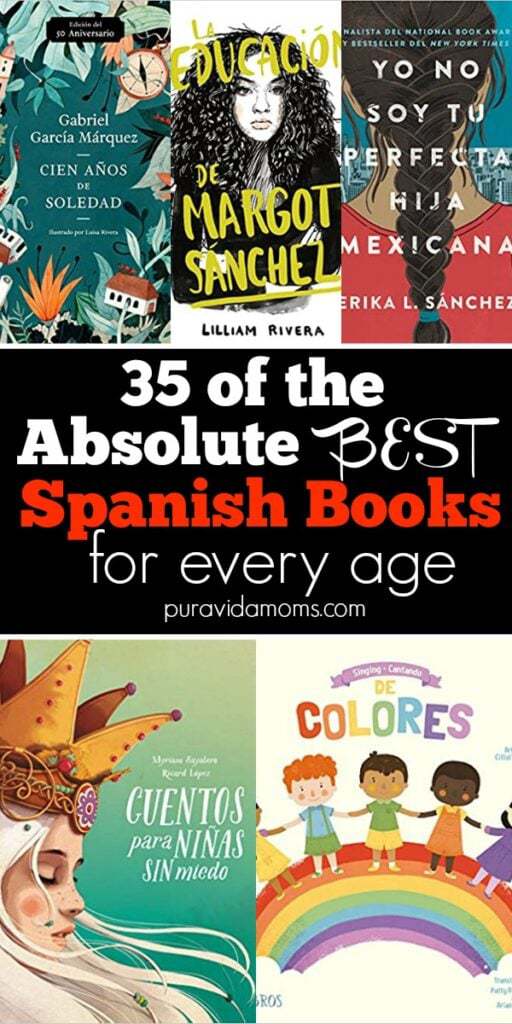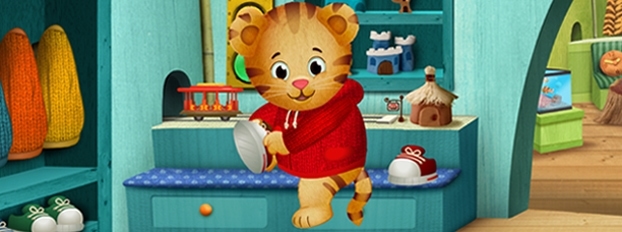35 Spanish Books You Have to Read!
This post may contain affiliate links.
Over 35 of the best Spanish books for all ages- perfect for improving your Spanish or for Spanish language learning!
I’m biased, but reading is absolutely the best! It’s relaxing, informative, and just plain enjoyable. It’s my favorite pastime.
Recently, I wanted to challenge myself to read more Spanish books, and I’m so glad I did! Reading in a foreign language can be a little daunting, but it’s also a fantastic way to improve your fluency while still having fun.
From timeless classics to contemporary favorites, the canon of Spanish literature has so much to offer readers! I’ve had a great time rounding up titles to share with you all, and I wanted to make sure that I included books that all ages could appreciate.
This post is divided up into sections dedicated to classic, adult, YA, and children’s Spanish books, so hopefully, there’s something for everyone!
Also, if you are looking for a great Spanish curriculum for young children, definitely check out Llamitas Spanish.
Without further ado, here are 35 of the best Spanish books I have encountered. (So far!)

Classic Spanish Novels
Pepita Jiménez by Juan Valera
Pepita Jimenez is a sweet and simple love story, this 1884 novel by writer and diplomat Juan Valera is easy to read and an excellent pick for intermediate Spanish language learners.
Don Quixote por Miguel de Cervantes
Don Quixote is an absolute classic! This iconic Spanish novel follows the (mis)adventures of an idealistic noble and his “squire” as they seek to bring chivalric justice back to a world that sorely needs it.
La casa en mango street por Sandra Cisneros
Another beloved novel of the Spanish language canon, Sandra Cisneros’ La Casa en Mango Street tells the coming-of-age story of a young Chicana girl in an impoverished Chicago neighborhood.
This beautiful exploration of identity, economic disparity, and womanhood is regarded as a modern classic in the Chicano literature genre.
Relato de un Náufrago por Gabriel García Márquez
Written by Colombian novelist Gabriel García Márquez, Relato de un Náufrago is based on the true story of a shipwrecked sailor.
Straightforward language and engaging action sequences make this an ideal read for those looking to learn Spanish.
Cien Años de Soledad (100 Years of Solitude) por Gabriel García Márquez
A masterwork in magical realism, this book follows the exploits of the Buendía family in a sweeping intergenerational saga.
Cien Años de Soledad has been celebrated as one of the best works of the Latin American literary genre.
El Amor en los Tiempos del Cólera by Gabriel García Marquez
Another García Márquez novel, El Amor en los tiempos de cólera takes a look at love in all its beauty and complexity. Great for Spanish speakers!
Rayuela por Julio Cortázar
Rayuela is a classic Spanish language novel that follows the fragmented life of Horacio Oliveira, an Argentinian intellectual who divides his existence between Buenos Aires and Paris.
RELATED POST: Spanish Picture Books For Preschoolers
Spanish Books For Adults
Waslala by Gioconda Bello
Waslala is a post-apocalyptic imagining of Guatemala in which one woman sets out on a quest to rediscover the legendary city of Waslala. A beautiful meditation on human rights, ecological justice, and economic inequalities.
La casa de los espíritus by Isabel Allende
In her debut novel La Casa de los espíritus, Chilean writer Isabel Allende traces the life of the Trueba family across four generations and the political unrest to which they bear witness.
This is the very first novel I read in Spanish and it continues to be one of my all-time favorite books in any language.
La sombra del viento by Carlos Ruiz Zafón
La sombra del viento is an internationally bestselling Spanish novel that is at once a journey through time and a love letter to reading itself. Super compelling plot format and engaging characters!
El día que se perdió la cordura by Javier Castillo
El día que se perdió la cordura is a fast-paced Spanish packed with action, intrigue, and suspense. Perfect for fans of the romantic thriller genre!
La breve y maravillosa vida de Oscar Wao by Junto Díaz
La breve y maravillosa vida de Oscar Wao follows the short yet remarkable life of Oscar de Leon, an overweight Dominican boy growing up in New Jersey. Originally written in English, this book is a translation- but a good one.
** Note: If you happen to have an English copy of any of these titles, it can be really helpful to compare it with the Spanish language versions!
El general y su laberinto by Gabriel García Márquez
In El general y su laberinto, Garcia Marquez delivers an unflinching depiction of Colombian leader Simon Bolivar in his final months. This narrative departs from the traditionally laudatory accounts of the Colombian figure’s life, and instead investigates the inner demons and defeats that lead to his early passing.
Como Agua para Chocolate by Laura Esquivel
From Mexican novelist and screenwriter Laura Esquivel, Como agua para chocolate is an iconic Spanish language novel that tells the story of Tita, a young woman whose emotions and desires are revealed through her cooking.
El Entenado by Juan José Saer
El entendado depicts the violent fallout between Spanish colonizers and indigenous people through the eyes of a young cabin boy. Highly thought-provoking, this book forces the reader to interrogate their own perceptions of cultural identity.
Señales que Precederán al Fin del Mundo by Yuri Herrera
Señales que precederán is a powerful story that is at once an examination of illegal immigration and a journey through the underworld.
Young Adult Spanish Books
Érase una vez y otras mentiras by Andy Weir, Illustrated by Sarah Andersen
In Érase una vez y otras mentiras, Alice, Dorothy, and Wendy of fairy tale fame are reimagined as teenagers at an exclusive magical boarding school. This wonderfully illustrated book makes for a fantastic dimension-hopping adventure!
La Educación de Margot Sanchez by Lilliam Rivera
In La educación de Margot Sánchez, the theme of teenage angst is the star. After “borrowing” her dad’s credit card, teenage Margot Sanchez is forced to work at her family’s struggling grocery store as punishment. Full of heart, wit, and humor, this is an empowering and engaging read! Great for Spanish speakers and readers alike.
El laberinto del fauno by Guillermo del Toro and Cornelia Fünke
Inspired by the movie of the same name, El laberinto del fauno is an engrossing dark fairytale come to life!
Cajas de Cartón by Francisco Jiménez
Cajas de cartón is a memoir of Fransisco Jiménez´s childhood memories as a migrant worker in California. A wonderful read for intermediate-level Spanish learners!
I taught this book for years to Spanish for Spanish speakers and it was the perfect novel for native speakers in grades 6-9.
Related post: 8 Great Middle-Grade Spanish Books
Malamor #1: Hacia el fin del mundo by Jose Ignacio Valenzuela
The first book in the Malamor trilogy, protagonist Angela embarks on a quest to a mythic city to rescue her estranged best friend. Mystery, action, and romance ensue!
La Ciudad de las Bestias by Isabel Allende
Another fantastic work by Isabel Allende, La ciudad de las bestias takes the reader on a heart-pounding journey through the Amazon rainforest.
Esperanza Renace by Pam Muñoz Ryan
A favorite among young readers everywhere, Esperanza Renace (Esperanza Rising in English) tells the story of one girl’s resilience and determination after she relocates to the Californian farm camps during the Great Depression.
Yo no soy tu hija mexicana perfecta by Erika L. Sánchez
Told with sensitivity and wit, Yo no soy tu hija mexicana perfecta follows Julia as she pieces together her perfect older sister Olga’s life after Olga dies in an accident.
A heartfelt tribute to the Mexican American experience and the bonds shared between family members. This novel is a translation from the original English.
El Alquimista by Pablo Coelho
Long regarded as the masterwork of Brazillian novelist Pablo Coelho, El Alquimista details the adventures of Santiago, an Andalusian shepherd in search of Egyptian treasure.
Paolo Coelho is a Brazilian author who writes in Portuguese but is renowned across Latin America for his books translated into Spanish.
Spanish Children’s Book Picks
Cuentos para niñas sin miedo by Myriam Sayalero and Illustrated by Ricardicus, Richard Lopez
Cuentos para niñas sin miedo is a collection of short stories centered around clever and capable heroines. Perfect for younger readers looking for a modern fairytale and intermediate Spanish language learners!
La madre Goose by Susan Middleton Elya and illustrated by Juana Martinez-Neal
La madre Goose is an adorably illustrated compilation of traditional children’s nursery rhymes with a Latino twist. This dual-language book is a wonderful way to introduce young readers to Spanish words and pronunciation!
Cantando de colores: A Bilingual Book of Harmony by Patty Rodriguez and Ariana Stein; Illustrated by Citlali Reye
Cantando de colores is an adorably illustrated children’s book that teaches the reader De Colores, one of the most recognizable folk songs in the Spanish language canon. Both Spanish and English texts are included.
Los tamales de Ana by Gwendolyn Zepeda; Illustrated by April Ward
Los tamales de Ana is a sweet and heartfelt tribute to one of the Hispanic world’s holiday traditions! Especially good for young siblings.
Malala Yousafzai: Guerrera Con Palabras by Karen Leggett Abouraya; Illustrated by Susan L. Roth
The inspiring story of Malala Yousafzai is adapted for children. Translated from the original English for a Spanish-speaking audience, this book offers a richly illustrated look at the power of education.
Mi papi tiene un moto by Isabel Quintero; Illustrated by Zeke Peña
Heartwarming and beautifully illustrated, Mi papi tiene un moto celebrates the bond between a father and daughter as they ride through the neighborhood together.
¡Solo pregunta! by Sonia Sotomayor; Illustrated by Rafael López
¡Solo pregunta! is a gentle and compassionate examination of differences for a young audience. Created by the impressive author and illustrator duo of Sonia Sotomayor and Rafael López, this book uses the metaphor of a community garden to celebrate the diversity of experience and encourage understanding.
El Principito by Antoine de Saint-Exupéry
Beloved for its poignancy and insight, El Principito (The Little Prince) has been translated from the original French for the Spanish-speaking audience. This is a sweet and touching story with appeal for both kids and adults and is also a great introduction to simple Spanish sentences for beginners.
¡Qué Cosas Dice mi Abuela! by Ana Galán; Illustrated by Pablo Pino
In ¡Qué cosas dice mi abuela! a young boy describes to readers the various Spanish language sayings of his Grandmother.
The Life of/ La Vida de Selena by Patty Rodriguez, Ariana Stein; Illustrated by Citlali Reye
The Life of/ La Vida de Selena is a bilingual board book that tells the story of the beloved Tejana music icon, Selena. Get ready to dance!
Related post: Huge List Of Spanish Shows For Kids
Pin it!


Christa Jimenez
Welcome! I’m Christa, a Spanish teacher married to a handsome Costa Rican and mother of two bilingual daughters. We’ve spent over 25 years living in and traveling to Costa Rica with our daughters, and this website is my love letter to all things Costa Rica- and to bilingual parenting too. You can read my full story here. Thanks for stopping by!









Just the article and list of books I was looking for! Thank you!
Yay!
Hi christa. Thank you so much for your recommendation. I am on my third novel reading it all en voz alta. I am seeing big improvements.